Mushrooms for food are a nutritious and versatile option driving culinary trends. With diverse flavors and textures, they cater to health-conscious consumers and plant-based diets. As a sustainable protein source, mushrooms align with eco-friendly practices, while specialty and exotic varieties meet the demand for unique culinary experiences. Functional benefits of certain species add to their popularity. From urban farming to global cuisine fusion, mushrooms are a key player in the evolving food landscape, inspiring innovative products and recipes that appeal to a wide range of tastes.
The global mushroom consumption was 14.35 million tonnes in 2020 and is expected to reach 24.05 million tonnes by 2028.
Only some 25 species have been perceived as edible and intensively cultivated (15), while only few species are the most produced and consumed edible mushroom worldwide: Agaricus bisporus (white mushroom, 22%), followed by Lentinus edodes (shiitake, 19%), Pleurotus spp. (oyster mushroom, 15%), and Flammulina velutipes (enoki mushroom, 11%).
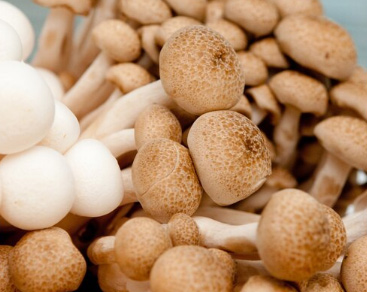
Button mushrooms (Agaricus bisporus) are small, mild-tasting fungi with a rounded cap and short stem. They have a delicate flavor and firm texture when cooked. Versatile and widely used in various dishes, they're a popular choice for their subtle earthy notes and adaptable culinary nature.
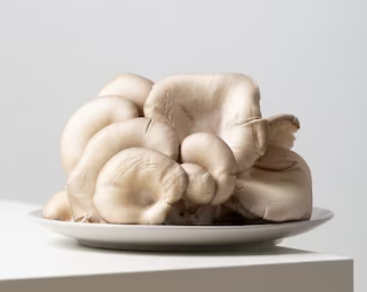
Cremini mushrooms (Agaricus bisporus) are closely related to button mushrooms, but darker and more flavorful. With a light to medium brown cap, firmer texture, and richer taste when compared to buttons, they offer a deeper earthy essence, making them a versatile ingredient in various cuisines.
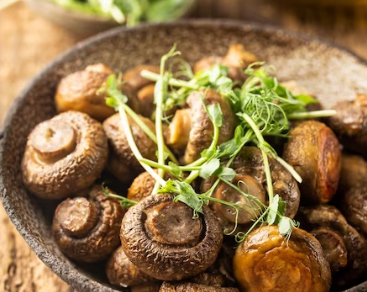
Portobello mushrooms (Agaricus bisporus) are mature cremini mushrooms. With a wide, flat cap and dense, meaty texture, they boast a robust umami flavor. Often used as meat substitutes due to their size and hearty quality, they're popular for grilling, roasting, and stuffing in culinary dishes.

Oyster mushrooms (Pleurotus ostreatus) are recognized by their oyster shell-like appearance and delicate, fan-shaped caps. They come in various colors, from white to gray to pink. With a mild, nutty flavor and tender texture, they're favored for stir-frying, soups, and adding subtle depth to dishes.

Chanterelle mushrooms (Cantharellus cibarius) are cherished for their vibrant golden color and trumpet-like shape. With a fruity aroma and a taste that balances sweetness and earthiness, they offer a unique culinary experience. Often sautéed or used in gourmet preparations, they bring a touch of elegance to dishes.
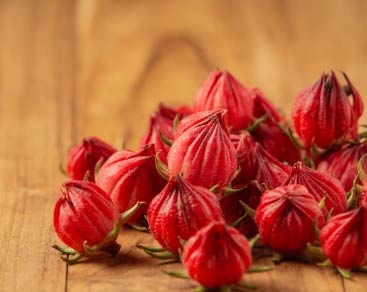
Flammulina velutipes, also known as enoki mushrooms, feature long, slender stems and tiny, white caps. Their crisp texture and mild, slightly fruity flavor make them a favorite for salads, soups, and Asian dishes. They add a delicate crunch and visual appeal to culinary creations.
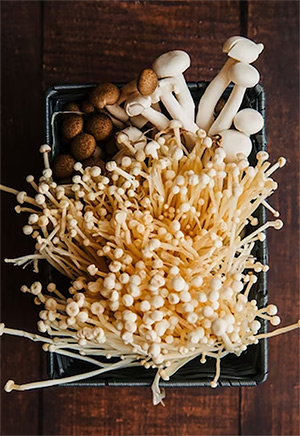
 Decrease the risk of cancer
Decrease the risk of cancer A review of 17 cancer studies from 1966 to 2020 shows that eating just 18 grams of mushrooms (equal to about a 1/8-cup or two medium mushrooms) a day may lower your risk of cancer by as much as 45%. Mushrooms are a powerful source of ergothioneine, an amino acid and antioxidant that prevents or slows cellular damage.
 Promote lower cholesterol
Promote lower cholesterol Mushrooms make an excellent substitute for red meat while minimizing calories, fat and cholesterol. Research shows that shiitake mushrooms, in particular, help to keep cholesterol levels low. They contain compounds that inhibit the production of cholesterol, block cholesterol from being absorbed and lower the overall amount of cholesterol in your blood.
 Provide a source of vitamin D
Provide a source of vitamin D Vitamin D helps your body absorb calcium to maintain and build strong bones. Many people rely on supplements or sunshine to get vitamin D, but if you’re looking to get this nutrient through your diet, mushrooms may be the answer. They are the only type of produce that is a source of vitamin D.
 Lower sodium intake
Lower sodium intake Sodium and high blood pressure often go hand in hand. Sodium causes the body to retain excess fluid, which can increase blood pressure. To decrease your sodium intake, consider adding mushrooms to your meals.
 Protect brain health
Protect brain health Researchers continue to study the effects of eating mushrooms on mild cognitive impairment (MCI). MCI causes memory and language difficulties and is often a precursor to Alzheimer’s disease. In a study in Singapore, participants who ate more than two cups of mushrooms a week had a 50% lower risk of developing MCI. Even those who ate only one cup saw some benefit. The mushrooms eaten by participants included golden, oyster, shiitake and white button mushrooms.

DBMR has served more than 40% of Fortune 500 firms internationally and has a network of more than 3000 clients. For such interesting market reports, visit - https://www.databridgemarketresearch.com/reports/europe-mushroom-for-food-market